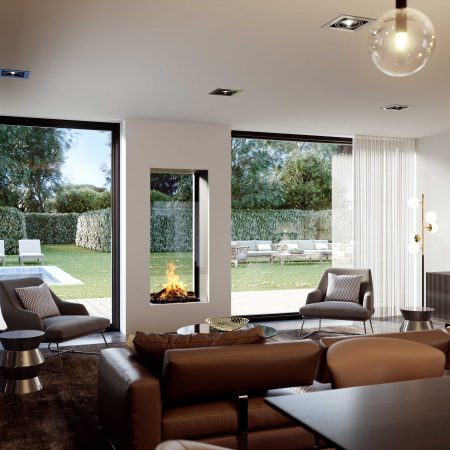
Another idea is taking the grilles and venting the heat through to a different room to warm a separate part of the house – we did this in one property and it worked really well. The thinner sides of the partition offer a good area to hide these away without disrupting the aesthetic. Sometimes a stove will produce so much heat that you might need more than one grille. In some cases you can angle them, but there are restrictions and too many turns will lower the efficiency of the exhaust. In most cases this means navigating it through the storey above. As a double-sided stove isn’t going to be positioned at the edge of the room, you’ll have to think about how you’re going to get the flue right the way up to the ridge level of your roof. You’ll also need a flue or chimney for the majority of installations. There are some systems where you can close the seal when not in use, but a lot of building control authorities want you to have a permanent open vent, which contradicts Passivhaus principles. You may get some issues if you’re working towards Passivhaus status because the air supply will break the thermal envelope of the property. Traditionally, you might have an air brick on the outer wall, but in some houses we put a duct running beneath the floor. What are the key considerations for including a double-sided stove or fire?īuilding Regs require you to have an adequate air supply to the unit.

Double sided fireplace between two rooms how to#
Award-winning architect Opinder Liddar from lapd architects answers your questions about how to achieve this look.


 0 kommentar(er)
0 kommentar(er)
